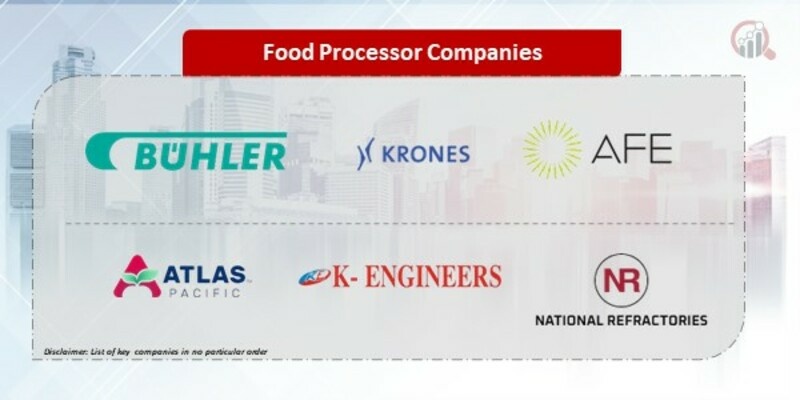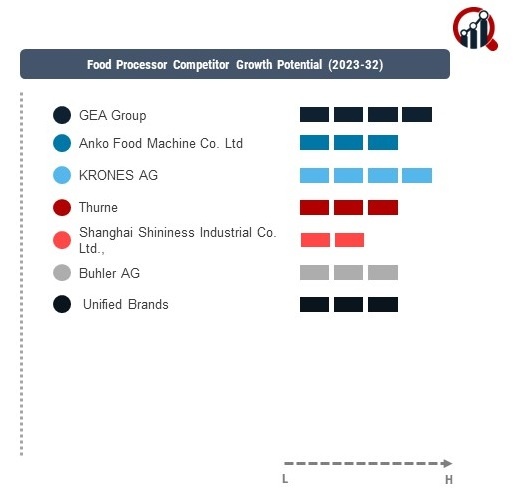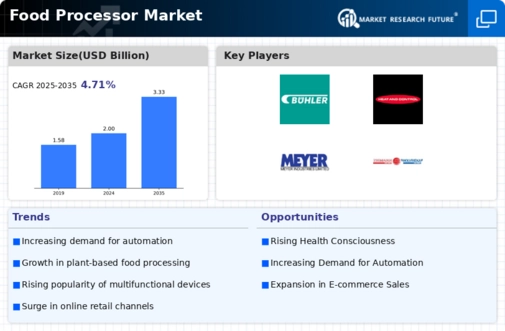Top Industry Leaders in the Food Processor Market

The food processor market has become increasingly competitive as consumers embrace convenience in food preparation. Key players in this sector are strategically positioning themselves to meet the growing demand for efficient and multifunctional kitchen appliances. This analysis provides insights into the key players, strategies adopted, factors influencing market share, emerging companies, industry trends, overall competitive scenario, and a recent development in 2023.
Key Players:
Buhler
Krones AG
AFE Group Ltd.
Atlas Pacific Engineering Company Inc.
K Engineers
National Refractories
Heat and Control, Inc.
Meyer Industries
ZIEMANN HOLVRIEKA
Tomra Systems
Strategies Adopted:
Market Share Analysis:
News & Emerging Companies:
Industry Trends:
Recent industry developments highlight a growing trend towards smart kitchen appliances. Major players are investing in integrating smart technologies into food processors, enabling features such as connectivity, recipe suggestions, and remote control through mobile applications. Additionally, there is an increased focus on sustainability, with companies exploring eco-friendly materials and energy-efficient technologies in their food processor designs.
In terms of investment trends, companies are exploring direct-to-consumer (DTC) models, leveraging e-commerce platforms, and building online communities. The shift towards online sales channels reflects the changing consumer buying behavior, with a preference for convenient and direct purchasing options.
Competitive Scenario:
The competitive landscape of the food processor market is dynamic, with established players adapting to evolving consumer preferences and emerging companies exploring innovative features and designs. The focus on innovation, product diversification, and effective marketing strategies remains central to the overall competitive scenario.
Recent Development
The food processor market was the increased emphasis on sustainability. Major players introduced initiatives to incorporate sustainable materials, reduce energy consumption, and improve the overall environmental footprint of their food processors. This development aligns with the growing consumer awareness of environmental issues and the demand for eco-friendly kitchen appliances. Companies invested in communicating their sustainability efforts, promoting energy-efficient features, and obtaining relevant certifications to appeal to environmentally conscious consumers. This shift towards sustainability reflects the industry's commitment to responsible manufacturing and addresses the changing expectations of the modern consumer.










